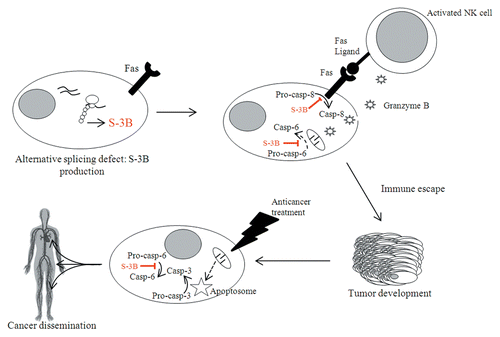Figures & data
Figure 1. Involvement of survivin-3B in cancer initiation, progression, and dissemination. The defects in alternative splicing that normally accompany oncogenesis can result in the production of survivin-3B (S-3B). Pre-malignant cells are normally detected by the immune system, in particular by natural killer (NK) cells. Upon such a recognition, activated NK cells attempt to eliminate target cells by triggering FAS-dependent cell death and by secreting granzyme B. However, S-3B inhibits both the extrinsic and the intrinsic pathways of apoptosis. In this way, pre-malignant cells can escape elimination by the immune system and generate neoplastic lesions. In addition, S-3B inhibits the apoptotic response of cancer cells to chemotherapy and perhaps favors their metastatic dissemination. Dashed lines summarize several events occurring upstream of the represented process.
